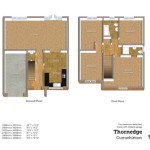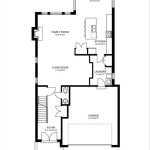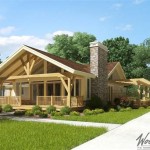Kerala House Design Plans: A Comprehensive Guide
Kerala, a state located in the southern part of India, is renowned for its lush green landscapes, serene backwaters, and unique architectural style. Kerala house designs are a blend of traditional and contemporary elements, creating visually stunning and functional living spaces. This article will delve into the intricacies of Kerala house design plans, exploring the key features, elements, and factors to consider when planning and constructing a Kerala-style home.
Key Features of Kerala House Designs:
1.Steeply Pitched Roofs:
One of the most distinctive features of Kerala house designs is their steeply pitched roofs. These roofs, often made of clay tiles or thatched materials, are designed to withstand the heavy monsoon rains prevalent in the region. The sloping roofs also help in channeling rainwater away from the house, preventing waterlogging and damage. 2.Courtyard Gardens:
Traditional Kerala homes often feature an open-air courtyard garden, known as aNadumuttam
, in the center of the house. This courtyard serves as a focal point for social gatherings, family interactions, and as a source of natural light and ventilation. The courtyard is often adorned with plants, flowers, and a traditional swing called anOonjal
. 3.Elevated Platforms:
Kerala houses are typically elevated on raised platforms, known asOottupuras
, to protect them from flooding during the monsoon season. These platforms also provide a cool and airy space for outdoor activities and relaxation. The elevation also helps in maintaining privacy and security. 4.Spacious Verandas:
Kerala homes often feature spacious verandas orSit-outs
, which are covered balconies or porches. These verandas serve as an extension of the living area, providing a shaded space for relaxation, entertaining guests, or enjoying the surrounding风景. 5.Use of Natural Materials:
Traditional Kerala houses extensively use natural materials such as laterite stone, wood, bamboo, and coconut leaves. These materials are locally sourced and eco-friendly, blending seamlessly with the natural surroundings. The use of natural materials also ensures that the house remains cool and comfortable during hot and humid weather.Elements of Kerala House Designs:
1.Traditional Kerala Architecture:
Kerala house designs often incorporate elements of traditional Kerala architecture, such asNalukettu
andEttukettu
. These architectural styles are characterized by their symmetrical layout, spacious courtyards, and intricate carvings. The traditional Kerala home is designed to be in harmony with nature, maximizing cross-ventilation and natural light. 2.Contemporary Design Elements:
Modern Kerala house designs often incorporate contemporary design elements, such as open floor plans, glass facades, and minimalist interiors. These elements create a blend of traditional and modern styles, resulting in visually appealing and functional living spaces. 3.Landscaping and Greenery:
Landscaping plays a crucial role in Kerala house design plans. The incorporation of tropical plants, lush gardens, and water features creates a serene and refreshing atmosphere. The use of greenery also helps in reducing the urban heat island effect and promoting sustainability.Factors to Consider When Planning a Kerala House:
1.Climate and Location:
Kerala's tropical climate, characterized by heavy rainfall and high humidity, must be considered when designing a house. Proper attention must be given to waterproofing, ventilation, and the use of appropriate materials to withstand the weather conditions. The location of the house, whether it is in a coastal area or inland, also influences the design considerations. 2.Family Needs and Lifestyle:
The design of a Kerala house should cater to the needs and lifestyle of the family. Factors such as the number of bedrooms, the presence of elderly or differently-abled family members, and the family's social and cultural practices should be taken into account. 3.Budget and Sustainability:
The budget for the construction of the house and the ongoing maintenance costs are important considerations. The use of sustainable materials and energy-efficient technologies can help reduce long-term costs while minimizing the environmental impact. 4.Local Regulations and Building Codes:
It is crucial to adhere to local regulations and building codes when designing and constructing a Kerala house. These regulations ensure the structural integrity, safety, and compliance with environmental standards. 5.Professional Expertise:
Engaging experienced architects and contractors with expertise in Kerala house design is essential to ensure the project's success. They can guide you through the design process, address technical challenges, and ensure the house meets your specific needs and preferences. Kerala house design plans offer a unique blend of tradition and modernity, creating visually stunning and функциональный living spaces. By considering the key features, elements, and factors discussed in this article, you can create a beautiful and sustainable Kerala-style home that meets your family's needs and reflects the rich cultural heritage of Kerala.
1000 Sq Ft House Plans 3 Bedroom Kerala Style Plan Ideas 6f0 Drawing Design Floor

Kerala Style House Design East Facing Home Plan With Elevation And Designs Books

Best 29 Nice Pictures Kerala Architectural House Plans Design Home Floor

3 Bedroom Kerala House Plans In 2d 3d

Free Kerala House Plan For Spacious 3 Bedroom Home Planners

1000 Sq Ft House Plans 3 Bedroom Kerala Style Plan Ideas 6f0 Model With Pictures One Story

House Plan At Rs 1 5 Square Feet In Pald Id 24189841830

Best Contemporary Inspired Kerala Home Design Plans Acha Homes

Kerala House Plans With Estimate For A 2900 Sq Ft Home Design

Kerala Home Design House Plans N Budget Models
Related Posts








